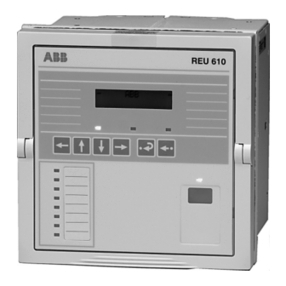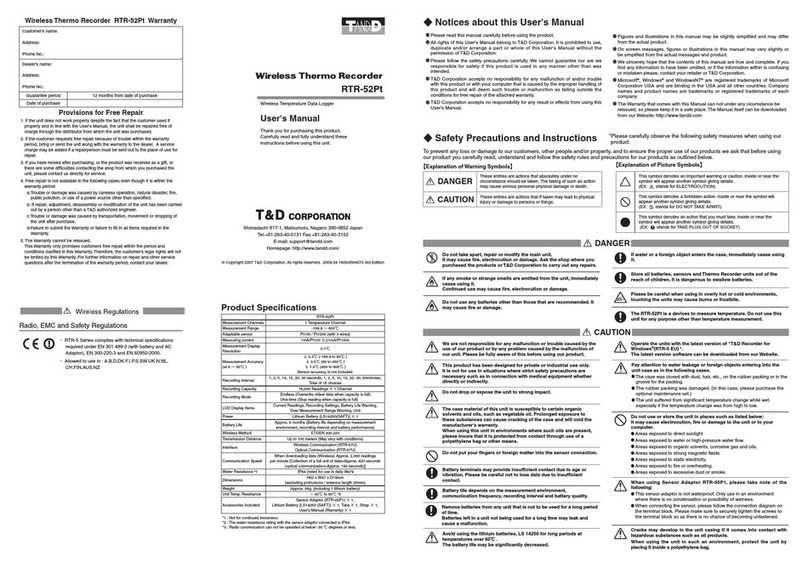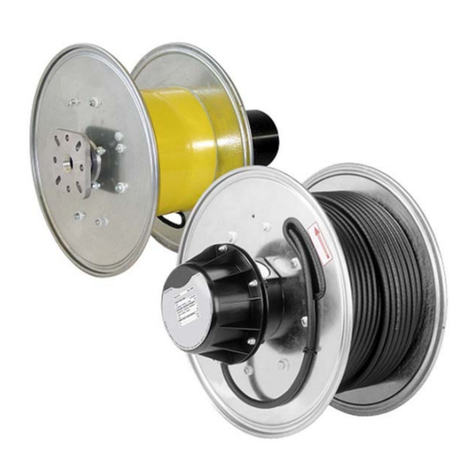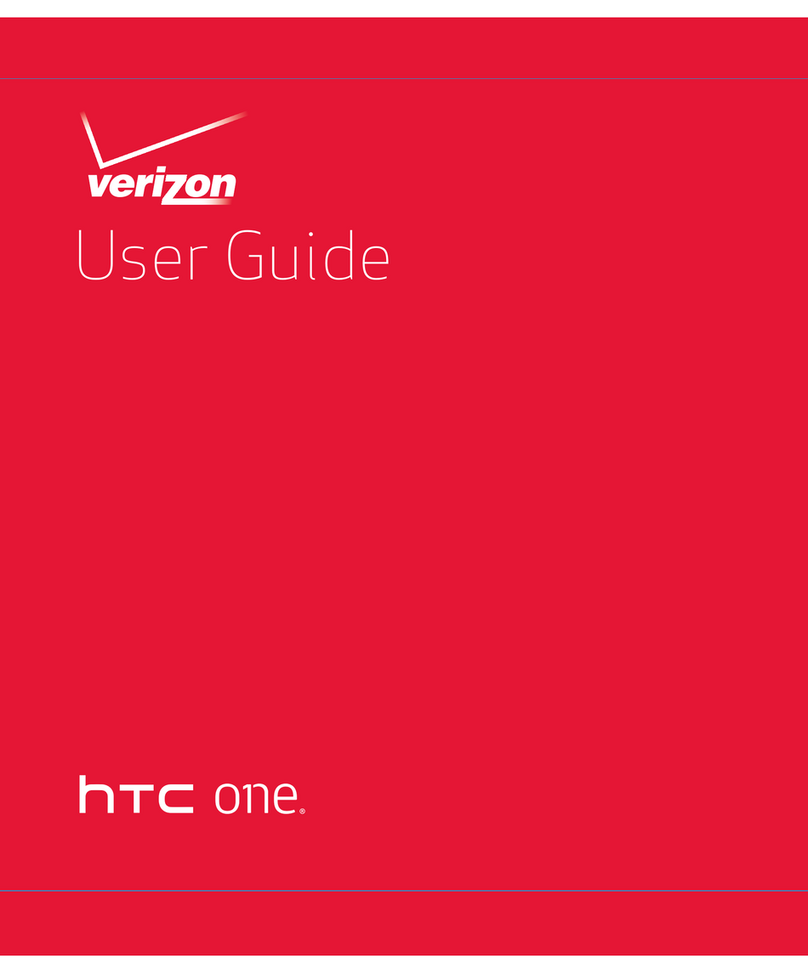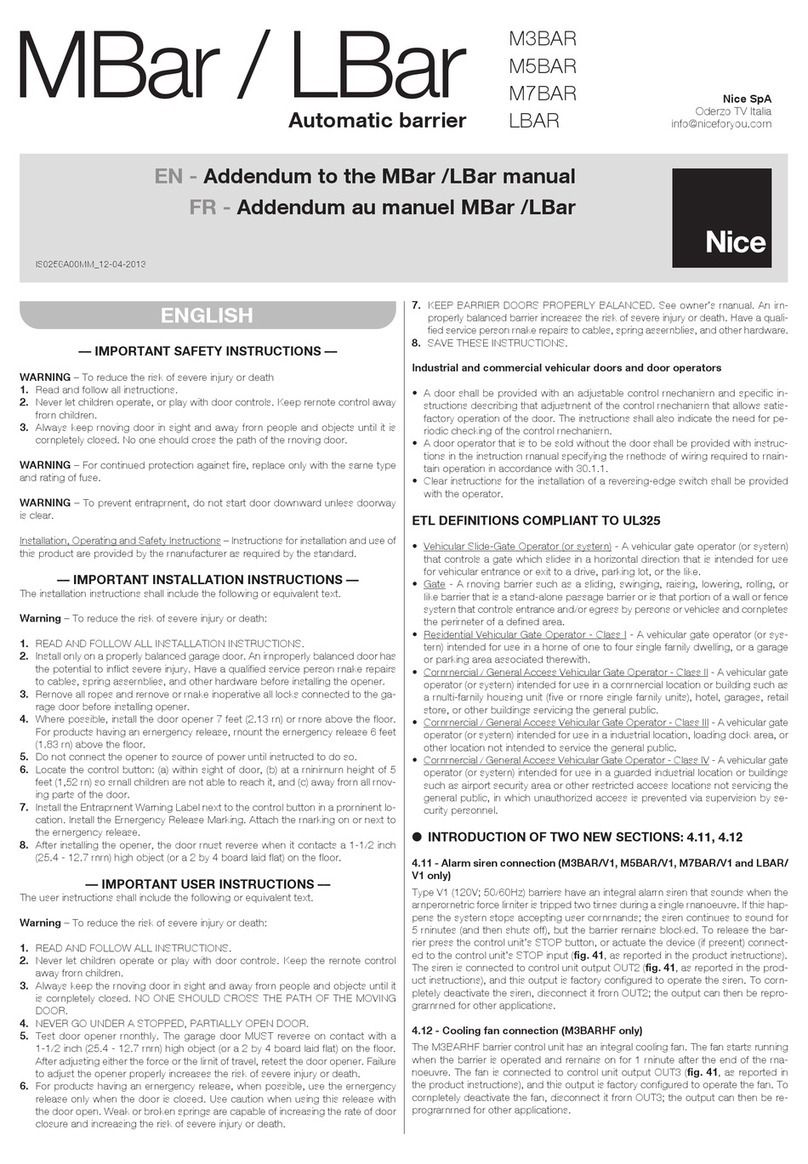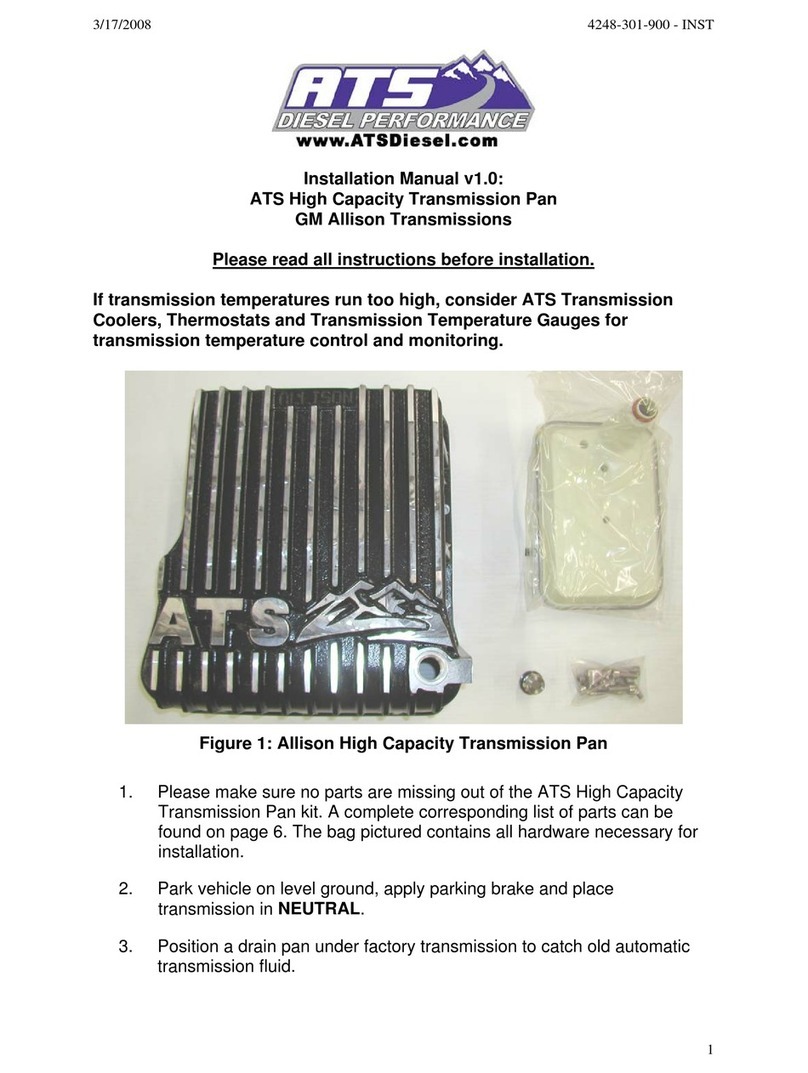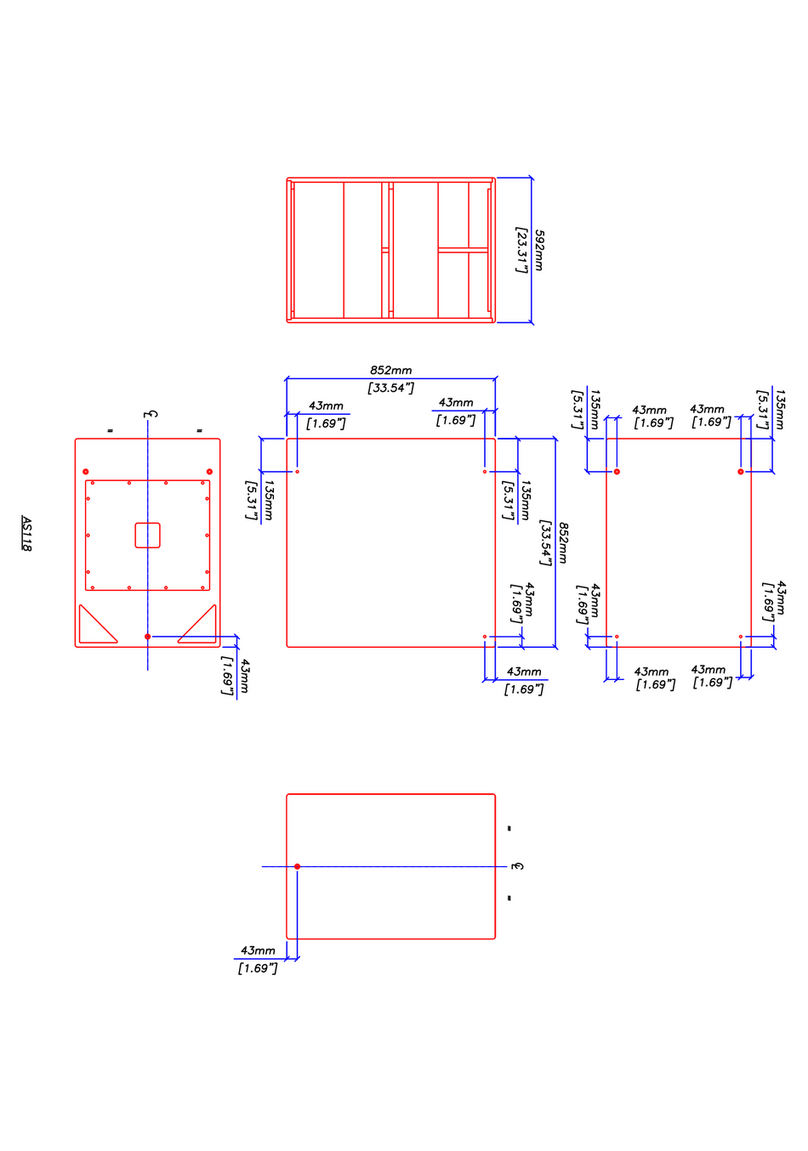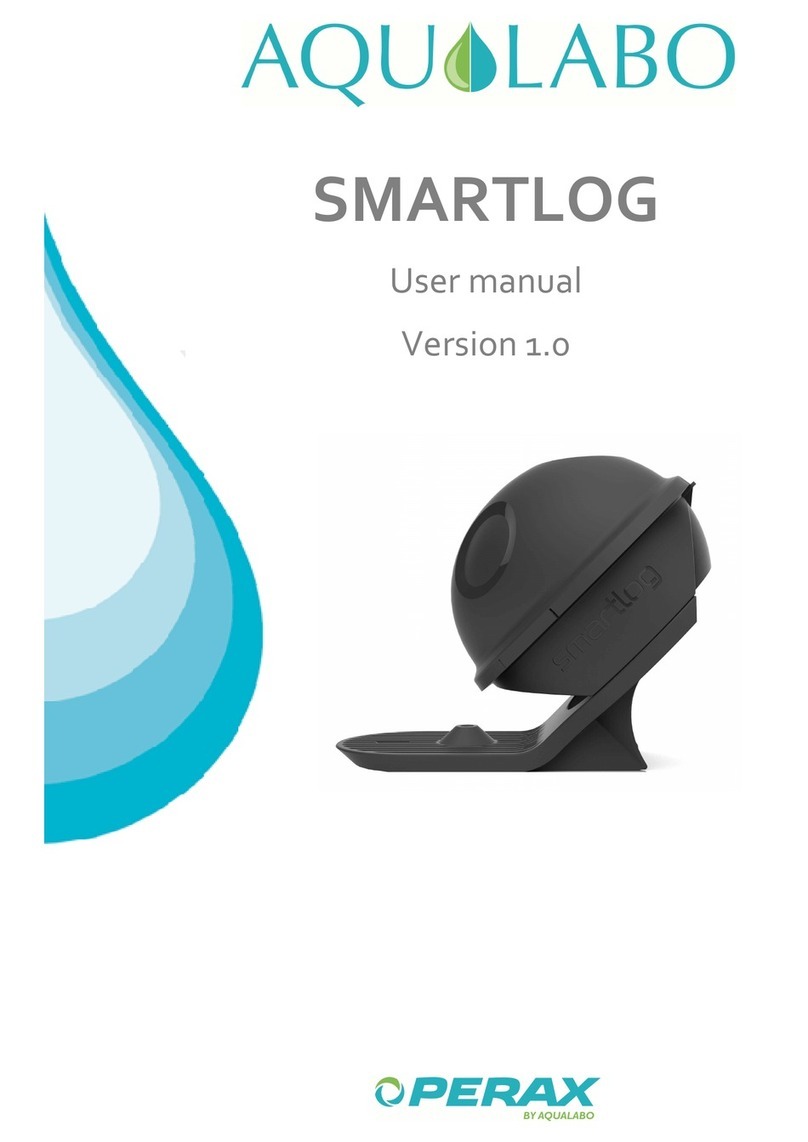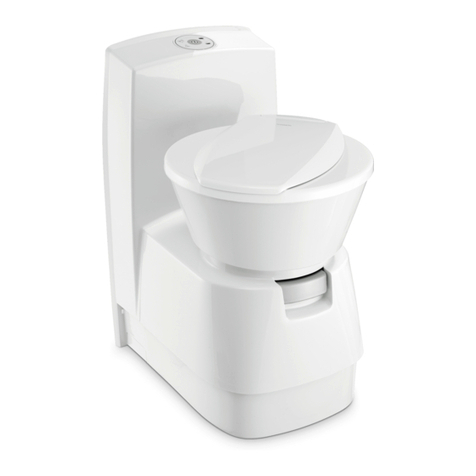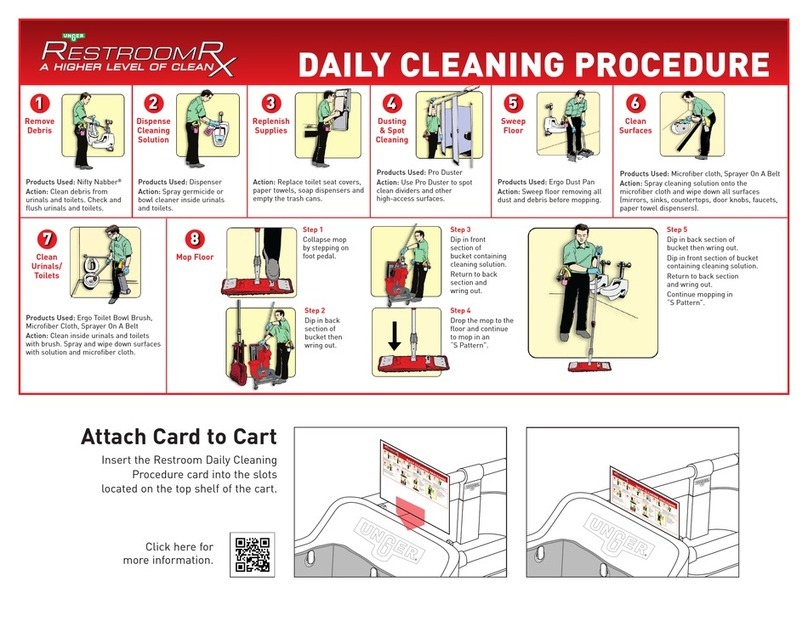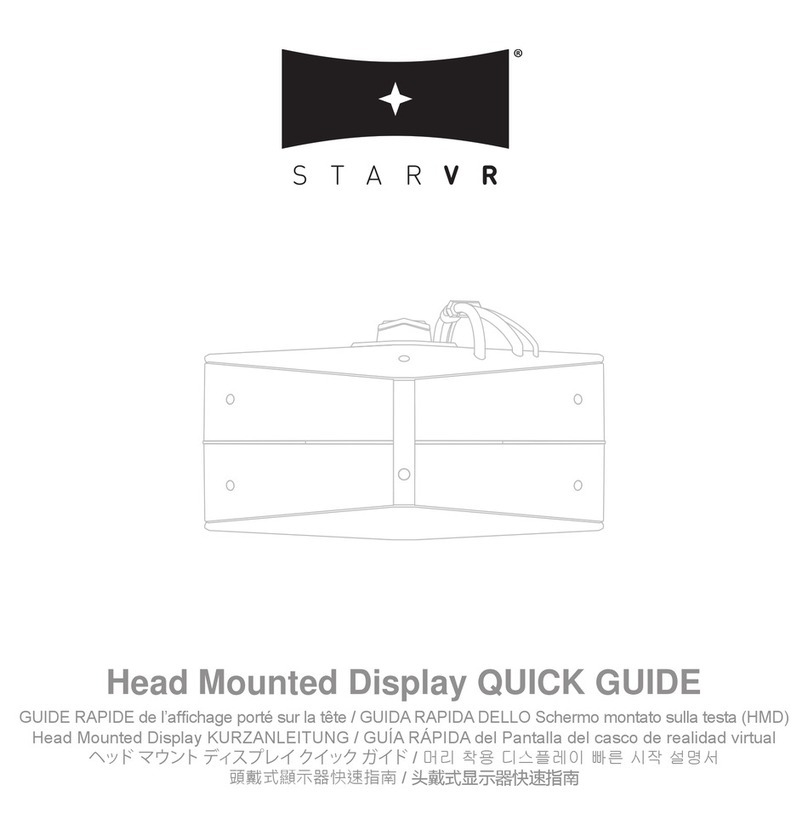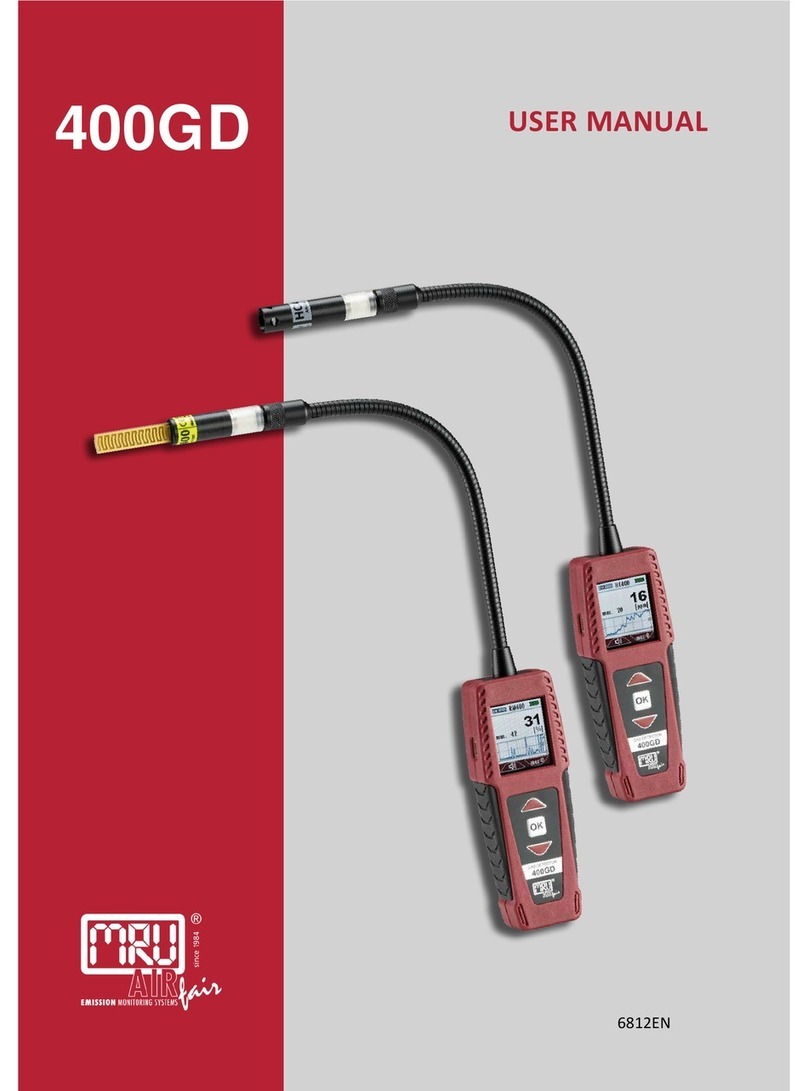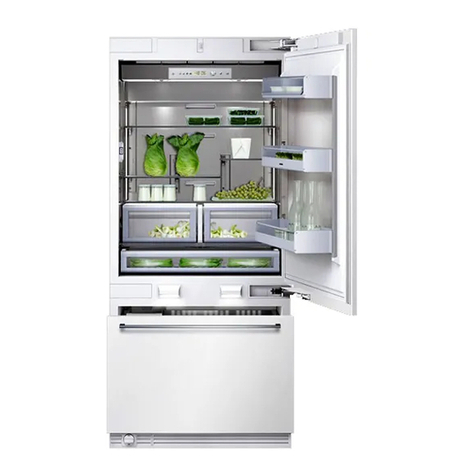Emax EDRYHT0091 User manual


AIR DRYER INSTRUCTION MANUAL
0
Contents
GENERAL SAFETY INFORMATION ………………………… 1
READ PRIOR TO STARTING THIS EQUIPMENT …………… 1
DESCRIPTION ……………………………………………………2
INSTALLATION ………………………………………………… 3
OPERATION ………………………………………………………5
MAINTENANCE …………………………………………………6
FLOW SCHEMATIC………………………………………………7
TROUBLESHOOTING……………………………………………8

AIR DRYER INSTRUCTION MANUAL
1
GENERAL SAFETY INFORMATION
1. This equipment is a pressure-containing device. Don’t exceed maximum
operating pressure as shown on equipment serial number tag.
2. This equipment requires electricity to operate. Install equipment in
compliance with national and local electrical codes.
3. Disconnect power supply to equipment when performing any electrical
service work.
READ PRIOR TO STARTINGTHIS EQUIPMENT
1. This equipment has been thoroughly checked, packed and inspected before
leaving out plant
2. This equipment is shipped to accommodate a forklift truck. When installing
this equipment, move it by means of a forklift. Never lift it by hooking on to the
air inlet and outlet connections.
3. Air-cooled units – Free air flow - Ambient air should be free to flow across the
refrigeration condenser. Do not block either side of the cabinet. Leave at least
1.5m clearance for free airs flow. The ambient temperature is to be within the
operating parameters of 2°C to 40°C.

AIR DRYER INSTRUCTION MANUAL
2
DESCRIPTION
Function
Compressed air enters the air-to-air heat exchanger and is pre-cooled by
the chilled outgoing air. The air then enters the air-to-refrigerant heat exchanger
where it is further cooled by the refrigeration system. As the air is cooled, water
vapor condenses into liquid droplets. The air and entrained water droplets then
enter the separator where liquid water is removed. In addition, the air is filtered of
all solid particles three microns and larger. Clean, dry compressed air leaving the
dryer minimizes maintenance and repair of pneumatic distribution, instrument
and control, and actuation devices, reduces product contamination, and increases
productivity.
Working flow
Compressed air, saturated with water vapor, enters the dryer and is
pre-cooled by the outgoing refrigerated air in an air-to-air heat exchanger
(pre-cooler). It is a shell and tube type with cold air in the shell and the warm air in
the tube side. In the pre-cooler, the warm incoming air is pre-cooled and the
outgoing refrigerated air is warmed, this reduces the amount of heat that will have
to be removed later by the refrigeration system, providing a more energy efficient
dryer. The Pre-Cooled air enters the evaporator, where heat from the compressed
air is transferred to the cold refrigerant. The compressed air is therefore cooled to
a predetermined temperature, allowing water vapor to condense into liquid
droplets. The compressed air then flows to the moisture separator, where the

AIR DRYER INSTRUCTION MANUAL
3
condensed moisture, oil and solids are separated from the compressed air and
discharged from the system by an automatic condensate drain trap. The cold
compressed air, enters the shell side of pre-cooler. By removing heat from the
incoming air, the outgoing air is reheated.
In the refrigeration system, the compressor compresses low temperature,
low-pressure refrigerant into high temperature, high-pressure gas. The
compressed refrigerant gas flows through the discharge line to a condenser, where
the gaseous refrigerant is condensed into a high-pressure liquid, by exchanging
heat to the cooling airflow. The high-pressure liquid refrigerant reduces to a low
pressure, low temperature mixture of liquid and vapor after passing through the
thermostatic expansion valve and evaporator as it takes heat from the compressed
air. The low-pressure refrigerant gas leaves the evaporator and flows to the liquid
refrigerant accumulator, ensuing that only gas is returned to compressor. The
accumulator prevents liquid refrigerant from entering the compressor and causing
severe damage to the compressor. Refrigerant travels through the suction line to
the compressor where the refrigeration cycle again starts.
INSTALLATION
Mounting
1. A dry, well-ventilated area is the best location for installation of the dryer. It
also should be in an area where the ambient temperature will not exceed 40°C or
fall below 2°C.
2. Adryer should be kept at a distance from the air compressor in order to prevent

AIR DRYER INSTRUCTION MANUAL
4
the vibration of the compressor from interfering with the dryer’s operation.
3.Mount dryer on firm level surface.
4.Automatic drain outlet should be connected to the plant drainage system in order
to prevent condensate from polluting plant.
5. For typical placement in a compressed air system, see drawing back.
Typical Piping connection
Three -valve bypass line should be installed before the dryer air inlet valve
and after the dryer air outlet valve. This bypass valve always be install to permit
the continued use of the plant compressed air system during any dryer
maintenance or servicing operations.
Power and electrical connections
1. Be sure that voltage to unit is as marked on unit serial number tag.
2. Range of voltage fluctuation will not exceed 10% of rated voltage.
μ
Filter
(1 )
Refrigerated Dryer
Filter
(1 )
μ μ
Filter
(0.01 )
Air compressor Aftercooler Receiver Separator
(3 )
μ
μ
Dew point:3-10°
Oil:0.003ppm w/w
Solid:<0.01
C
Temperature:<45°
Oil:5ppm w/w
Solid:<3
μ
Dew point:3-10°
Oil:1ppm w/w
Solid:<1
C
μ
C

AIR DRYER INSTRUCTION MANUAL
5
3. Electrical entry in through electrical connection entry hole in electrical
enclosure. Connect power to proper terminals.
OPERATION
Preparation for start-up
1. Be sure that voltage to unit, air inlet pressure, air inlet temperature, air
flow are as marked on unit serial number tag.
2. Blow off the compressed air lines for a few minutes to remove welding
slag.
Start-up
1. Check the low refrigeration pressure gauge, it should indicate higher than
0.25MPa.
2. If the voltage is at normal range, open electric control box and close air
switch.
3. Press the control button “ON” to start.
Operation
1. Take note of refrigerant gauge indication at normal range:
The low refrigeration pressure gauge should indicate
Refrigerant R22 R134a R404A R407C
L-Pessure 0.35~0.45MPa 0.18~0.25MPa 0.45~0.55MPa 0.30~0.40MPa
If pressure is below this range please contact local service.

AIR DRYER INSTRUCTION MANUAL
6
Notice proceeding
1. Note running of the refrigeration compressor. Check and remove
troubleshooting in time.
2. Don’t start-up and shutdown frequently, dryers should restarted after 10
minutes.
Shutdown
Close the dryer air inlet valve and press the control button to shut, then
disconnect the power and close the water supply valve.
MAINTENANCE
Air-cooled condenser
Ambient air should be free to flow across the refrigeration condenser for heat
exchanging. Do not locate the dryer in direct sunlight. Air-cooled condenser
should be cleaned with compressed air periodically.
Compressed air

AIR DRYER INSTRUCTION MANUAL
7
Automatic condensate drain
Monthly flush out accumulated sludge and dirt in the automatic condensate
drain. Procedure for clean drains:
a. Close manual valve ahead of drain.
b. Depressurize drain by loosening shell bolt.
c. Remove shell bolt and detach the shell, take filter core out and clean it with
brush and water.
d. Reassemble the core and the shell. Then open the manual valve ahead of drain.
Electric apparatus
Check parts in the electric apparatus box and removes troubleshooting in
time.
FLOW SCHEMATIC
Pre-cooler
Evaporator
Low refrigerant
pressure gauge
Compressor
Air inlet
Air condenser
Air outlet
Temperature Switch
Expansion valve
filter
Drain
separator
Fan Motor Switch
Flow diagram

AIR DRYER INSTRUCTION MANUAL
8
TROUBLESHOOTING
POSSIBLE CAUSE (S) CORRECTIVE ACTION
Power failure Check power to unit
Temperature switch is
disconnected Reset
Faulty wiring, loose terminals Have electrician check
electrical connections
Compressor motor damage Have compressor check and
replace
Contactor damage Have contactor check and
replace
Dryer not running
Refrigerant leaks Leak test and repair,
refrigerant to be re-filled.
Compressor run
discontinues Lack of refrigerant Refrigerant to be re-filled.
Ambient temperature too high Check minimum/maximum
temperature ranges
Fan motor switch improperly
set Set properly
Air-cooled models – Dirty,
clogged condenser fins,
obstructed air flow across
condenser
Clean condenser and check for
free air flow
Too much refrigerant Let out excessive refrigerant
Condense pressure
too high
Air in refrigerated cycle system Remove air in system
Condense pressure
too low Fan motor switch improperly
set Set properly
Thermostatic expansion valve
open degree too large Adjust Thermostatic
expansion valve correctly
Evaporate pressure
too high Thermostatic expansion valve
damage Replace Thermostatic
expansion valve
Evaporate pressure
too low Refrigerant Leak Refrigerant to be re-filled.
Compressor sounds
abnormally Replace damaged component
System noise Thermostatic expansion valve
sounds Check refrigerant capacity
and replace filter

AIR DRYER INSTRUCTION MANUAL
9
Excessive air flow Check flow rate and select
dryer newly
Freezing of moisture in
evaporator because of
refrigeration system
improperly functioning
Adjust hot gas bypass valve
clockwise
Pipeline diameter too small
Pipeline too long
Pipeline elbows too many Install new pipeline
Inlet/Outlet valve not open
completely Open inlet/outlet valve
completely
High pressure drop
across dryer
Pipeline leak Leak test
Low inlet air pressure
High ambient air temperature
High inlet air temperature
High air flow
Check Dryer Selection
Air bypass valve open Close air bypass valve
Refrigeration system
not functioning
properly drain troubleshooting
a. Manual valve not open
b. Drain jam or damage
Drain line higher than drain
condensate outlet
Open manual valve
Clean and replace drain
Install condensate line Newly
Fuse burn off Replace fuse
Condense pressure too high
bring on high pressure switch
open
Ambient temperature too high
Inlet temperature too high
Air flow too high
Adjust working status or select
dryer newly
Evaporate pressure too low
bring on low pressure switch
open
Ambient temperature too low
Thermostatic expansion valve
opening degree too small or
jam
Refrigerant leak
Adjust hot gas bypass valve
regulator clockwise
Adjust or replace thermostatic
expansion valve
Replace dryer/filter
Check leak
Electric component damage Replace damaged component
Stop at running
process
Compressor damage Replace compressor
This manual suits for next models
5
Table of contents

